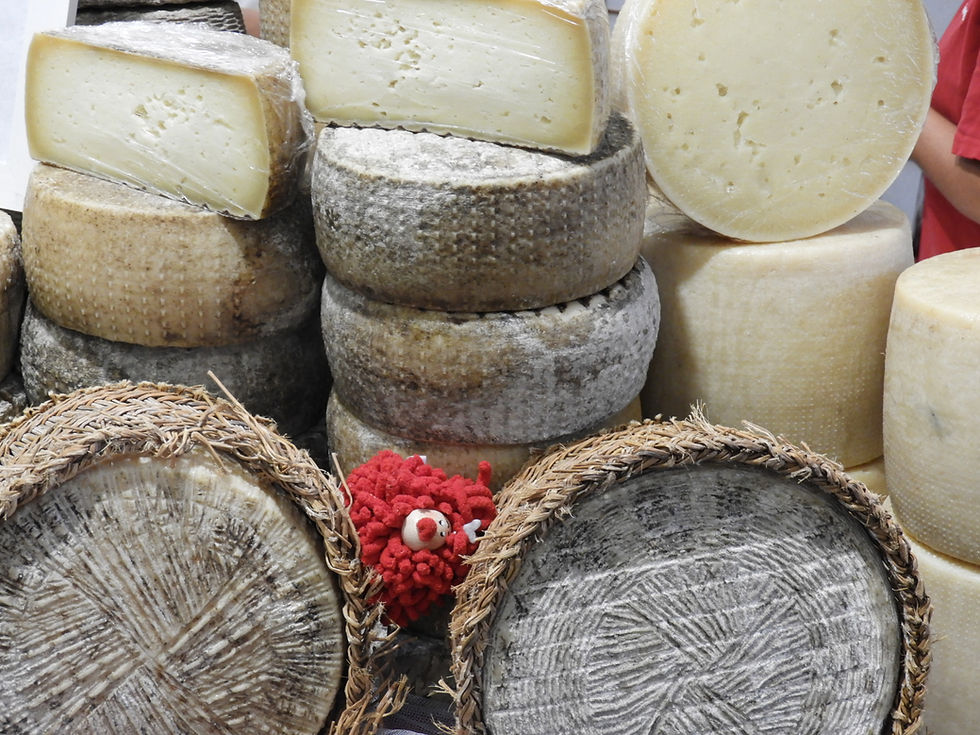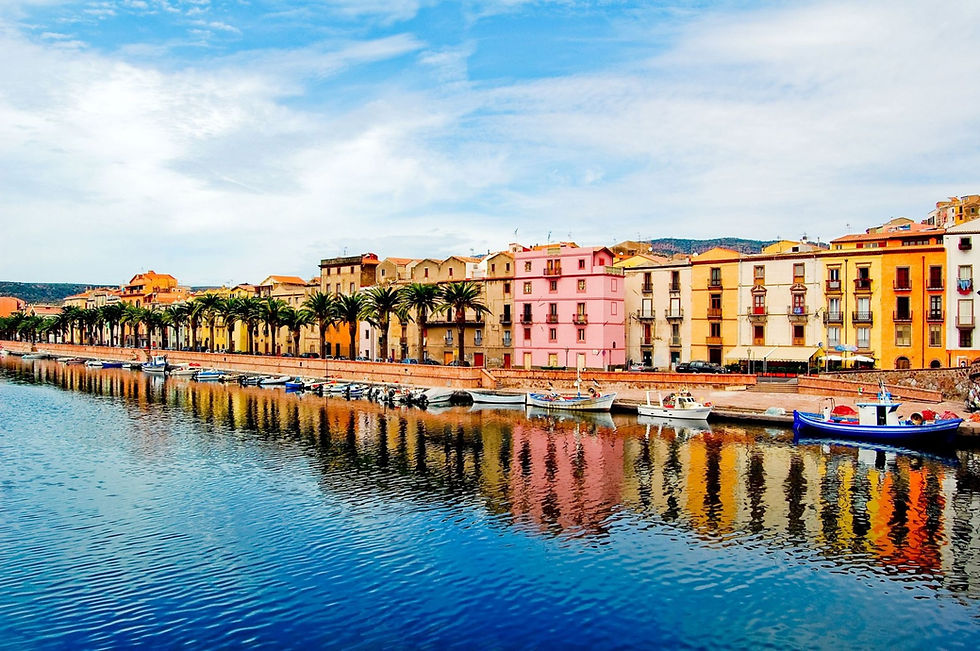The Rich History of Pecorino Cheese and Wine Unveiled
- Bruce White
- 3 days ago
- 5 min read
Updated: 2 days ago
Pecorino cheese and Pecorino wine share more than just a name. Both are deeply rooted in Italian tradition, each with a unique story that reflects the culture, geography, and history of Italy. Exploring their origins reveals how these two products have evolved over centuries, becoming symbols of Italian culinary heritage. This post uncovers the fascinating history of Pecorino cheese and Pecorino wine, highlighting their distinct characteristics and cultural significance.

The Origins of Pecorino Cheese
Pecorino cheese is one of Italy’s oldest cheeses, with roots tracing back to ancient times. The name "Pecorino" comes from the Italian word pecora, meaning sheep, as the cheese is traditionally made from sheep’s milk. This cheese has been a staple in Italian diets for thousands of years, especially in central and southern Italy.
Ancient Beginnings
Historical records suggest that Pecorino cheese dates back to the Roman Empire. Roman writers like Pliny the Elder mentioned sheep’s milk cheeses in their texts, praising their flavor and durability. Pecorino was valued not only for its taste but also for its long shelf life, making it ideal for Roman soldiers and travelers.

Regional Varieties
Pecorino cheese is produced in several Italian regions, each offering a unique take on the cheese:
Pecorino Romano: Originating from Lazio, Sardinia, and Tuscany, this variety is known for its sharp, salty flavor. It is often grated over pasta dishes.
Pecorino Toscano: From Tuscany, this cheese is milder and creamier, enjoyed both fresh and aged.
Pecorino Sardo: Hailing from Sardinia, it has a robust and slightly spicy taste.
Each variety reflects the local environment, sheep breeds, and traditional methods passed down through generations.

Traditional Production Methods
The production of Pecorino cheese involves simple yet precise steps:
Milk Collection: Fresh sheep’s milk is collected, often from local farms.
Coagulation: The milk is warmed and combined with natural rennet to curdle.
Cutting and Cooking: The curd is cut into small pieces and gently cooked to release whey.
Molding and Pressing: The curds are placed into molds and pressed to shape the cheese.
Salting and Aging: The cheese is salted and aged from a few weeks to several months, developing its characteristic flavor and texture.
This artisanal process ensures that each wheel of Pecorino cheese carries the essence of its origin.
The Story Behind Pecorino Wine
Unlike Pecorino cheese, Pecorino wine is a white wine made from the Pecorino grape, an ancient variety native to Italy’s Marche and Abruzzo regions. The grape’s name is believed to derive from the same root as the cheese, possibly because shepherds who tended sheep in these areas cultivated the grape.

Ancient Roots of the Pecorino Grape
The Pecorino grape has been cultivated since Roman times, though it remained relatively obscure until recent decades. Historical texts mention the grape as part of the local viticulture, but it was overshadowed by more famous Italian varieties.

Revival and Modern Recognition
In the late 20th century, winemakers began rediscovering Pecorino grapes, recognizing their potential for producing fresh, aromatic white wines. Today, Pecorino wine is prized for its crisp acidity, floral notes, and mineral undertones, making it a favorite among Italian white wines.
Characteristics of Pecorino Wine
Pecorino wine typically features:
Color: Pale straw yellow.
Aroma: Floral scents with hints of citrus, green apple, and herbs.
Taste: Dry, with bright acidity and a slightly bitter finish.
Food Pairing: Ideal with seafood, light pasta dishes, and, interestingly, Pecorino cheese.
The wine’s profile complements the salty, rich flavors of Pecorino cheese, creating a harmonious pairing that reflects their shared heritage.
Cultural Significance of Pecorino Cheese and Wine
Both Pecorino cheese and Pecorino wine are more than food products; they represent the traditions and lifestyles of rural Italy. Shepherds, farmers, and winemakers have preserved these products through centuries of social and economic changes.
Pecorino Cheese in Italian Cuisine
Pecorino cheese is a cornerstone of Italian cooking. It appears in classic dishes such as:
Cacio e Pepe: A simple Roman pasta dish featuring Pecorino Romano and black pepper.
Pecorino with Honey or Jam: A popular appetizer pairing the cheese’s saltiness with sweetness.
Grated over Pasta and Soups: Enhancing flavors with its sharp, savory notes.
Its versatility and distinctive taste make it a beloved ingredient across Italy and beyond.
Pecorino Wine in Italian Wine Culture
Pecorino wine’s resurgence has brought attention to Italy’s lesser-known grape varieties. It symbolizes the country’s commitment to preserving biodiversity and traditional winemaking. Wine enthusiasts appreciate Pecorino for its freshness and ability to express the terroir of central Italy.

How Pecorino Cheese and Wine Complement Each Other
The connection between Pecorino cheese and Pecorino wine goes beyond their names. Their flavors and textures create a natural balance when enjoyed together.
The saltiness and richness of Pecorino cheese contrast with the crisp acidity of Pecorino wine.
The wine’s floral and citrus notes enhance the cheese’s nutty and tangy flavors.
Both products reflect the land and climate of their regions, offering a taste of Italian tradition.
This pairing is a perfect example of how food and drink from the same origin can complement and elevate each other.
Preserving Tradition in a Modern World
Today, both Pecorino cheese and Pecorino wine face challenges from industrialization and global markets. However, many producers remain dedicated to traditional methods, ensuring quality and authenticity.
Protected Designations: Pecorino cheese varieties like Pecorino Romano have Protected Designation of Origin (PDO) status, safeguarding their production standards.
Sustainable Practices: Winemakers focus on sustainable viticulture to maintain the health of the land and grape quality.
Cultural Festivals: Local festivals celebrate Pecorino cheese and wine, promoting awareness and appreciation.

Shepherds minding the pecora herd
These efforts help keep the history and culture of Pecorino alive for future generations.
Notable Producers of Pecorino Wine and Cheese
Pecorino Wine Producers (Abruzzo & Marche):
Cantina Tollo (Abruzzo): A well-known cooperative producing fresh, aromatic Pecorino wines.
Tenuta Ulisse (Abruzzo): Recognized for modern, expressive Pecorino wines with vibrant fruit notes.
Ciù Ciù (Marche): Organic producer offering elegant Pecorino wines from the Offida DOCG area.
Velenosi (Marche): Produces Pecorino wines with a balance of minerality and floral aromas.
Pecorino Cheese Producers:
Caseificio Il Fiorino (Tuscany): Award-winning producer of Pecorino Toscano, known for quality and tradition.
Caseificio Pinna (Sardinia): Famous for Pecorino Sardo, offering both fresh and aged varieties.
Fattoria Nuova (Lazio): Specializes in Pecorino Romano, a classic hard cheese with a sharp, salty flavor.
Cooperativa Agricola San Michele (Sardinia): Produces artisanal Pecorino Sardo using traditional methods.





Comments